
You are viewing documentation for KubeSphere version:v3.0.0
KubeSphere v3.0.0 documentation is no longer actively maintained. The version you are currently viewing is a static snapshot. For up-to-date documentation, see the latest version.
Deploy Memcached on KubeSphere
Memcached is an in-memory key-value store for small chunks of arbitrary data (strings, objects) from results of database calls, API calls, or page rendering. Its API is available for the majority of popular languages.
This tutorial walks you through an example of deploying Memcached from the App Store of KubeSphere.
Prerequisites
- Please make sure you enable the OpenPitrix system.
- You need to create a workspace, a project, and a user account (
project-regular) for this tutorial. The account needs to be a platform regular user and to be invited as the project operator with theoperatorrole. In this tutorial, you log in asproject-regularand work in the projectdemo-projectin the workspacedemo-workspace. For more information, see Create Workspaces, Projects, Accounts and Roles.
Hands-on Lab
Step 1: Deploy Memcached from the App Store
-
On the Overview page of the project
demo-project, click App Store in the top left corner.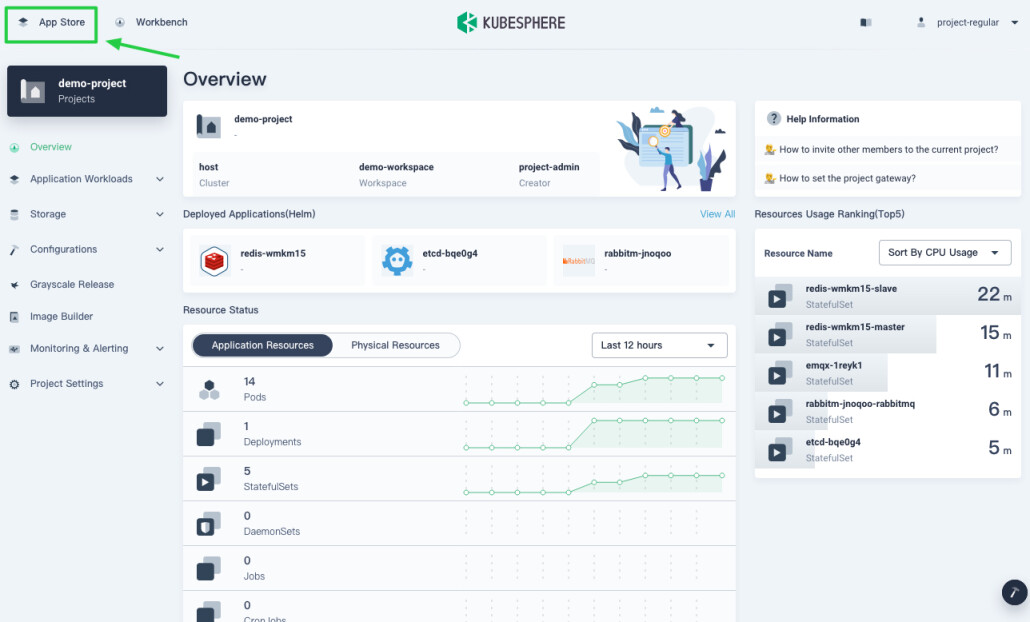
-
Find Memcached and click Deploy on the App Info page.
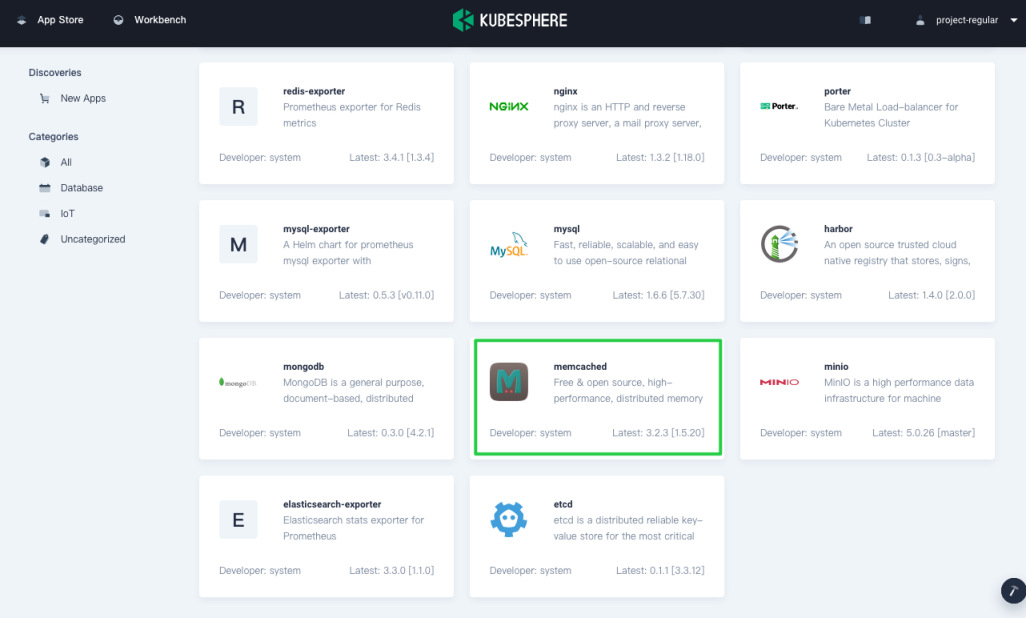
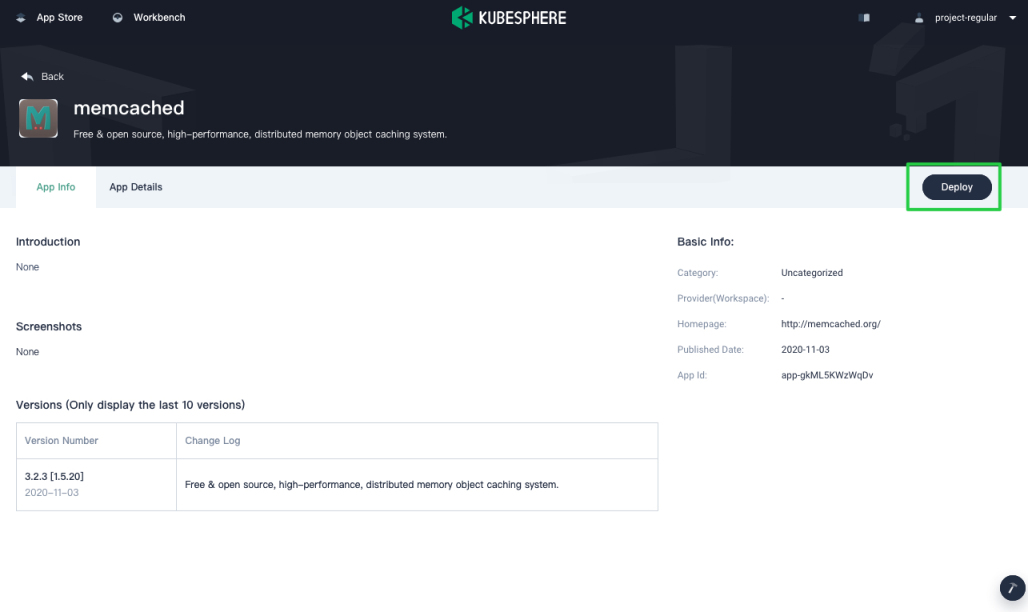
-
Set a name and select an app version. Make sure Memcached is deployed in
demo-projectand click Next.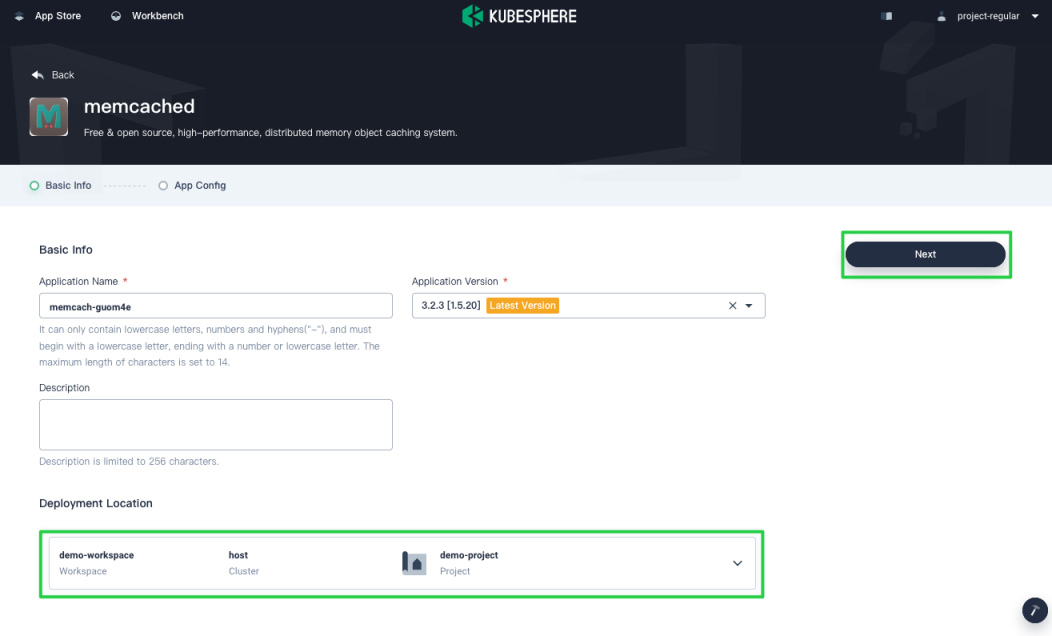
-
In App Config, you can use the default configuration or customize the configuration by editing the YAML file directly. Click Deploy to continue.
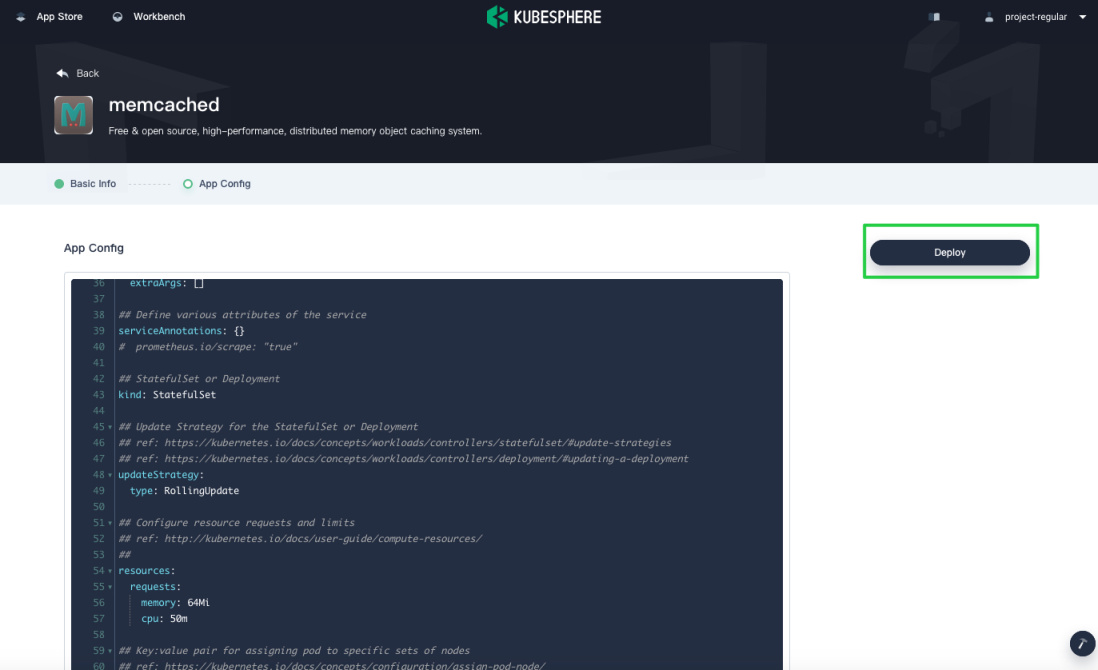
-
Wait until Memcached is up and running.
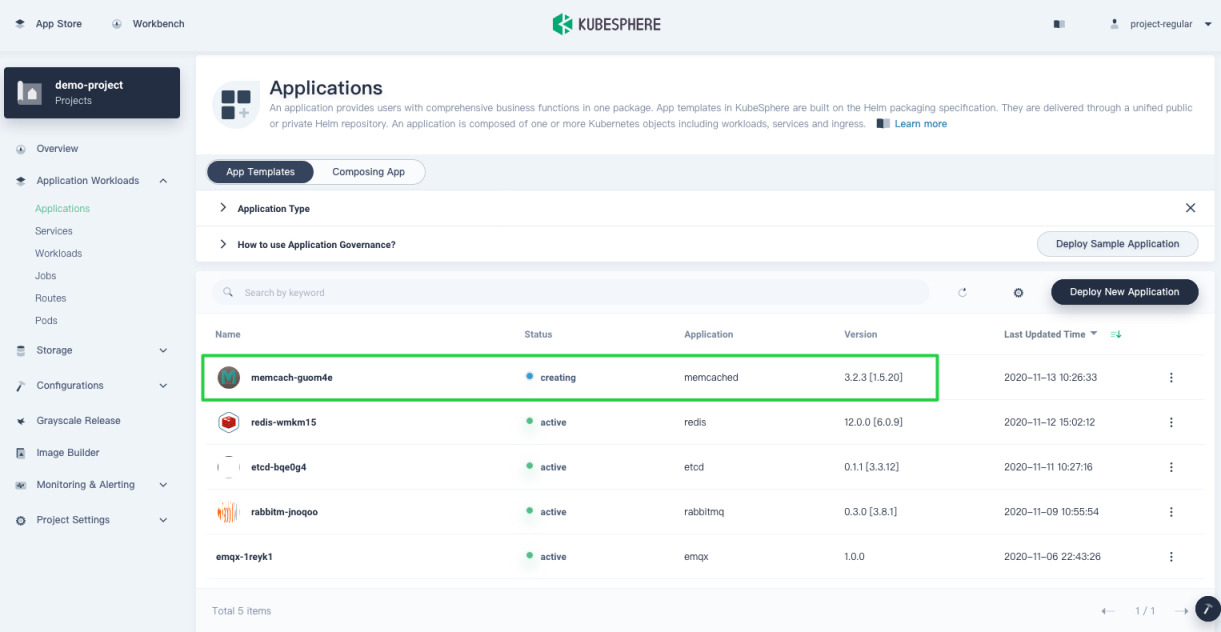
Step 2: Access Memcached
-
Navigate to Services, and click the service name of Memcached.
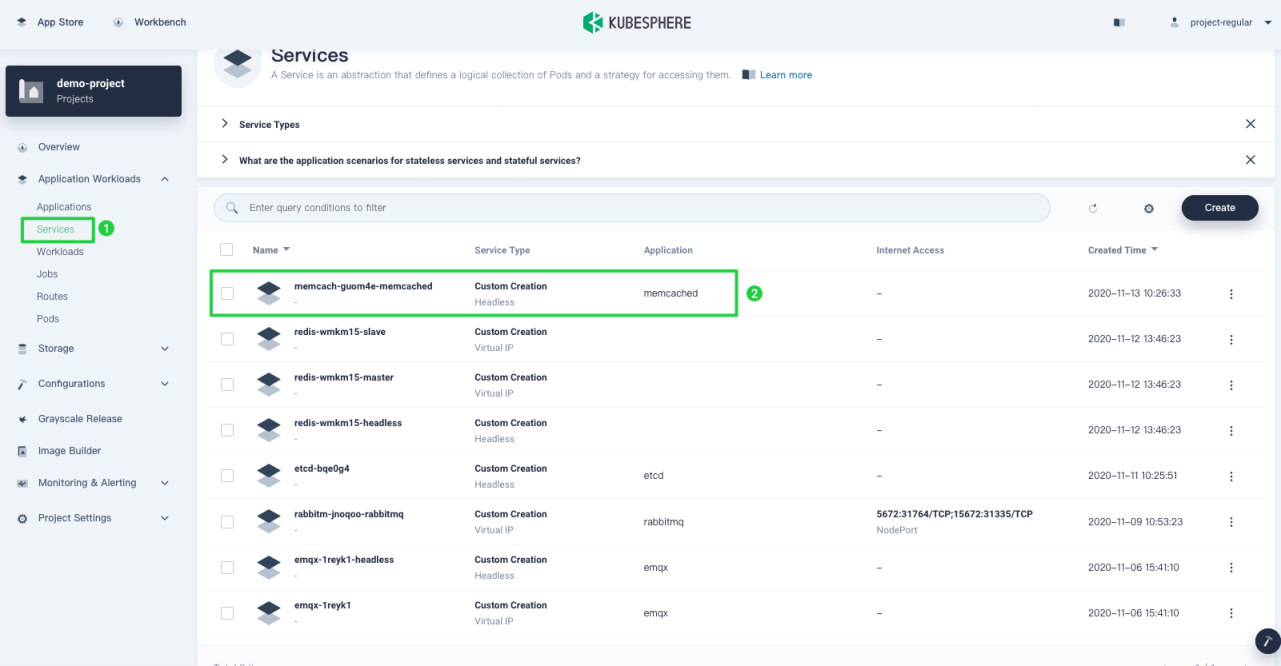
-
On the detail page, you can find the port number and Pod IP under Service Ports and Pods respectively.
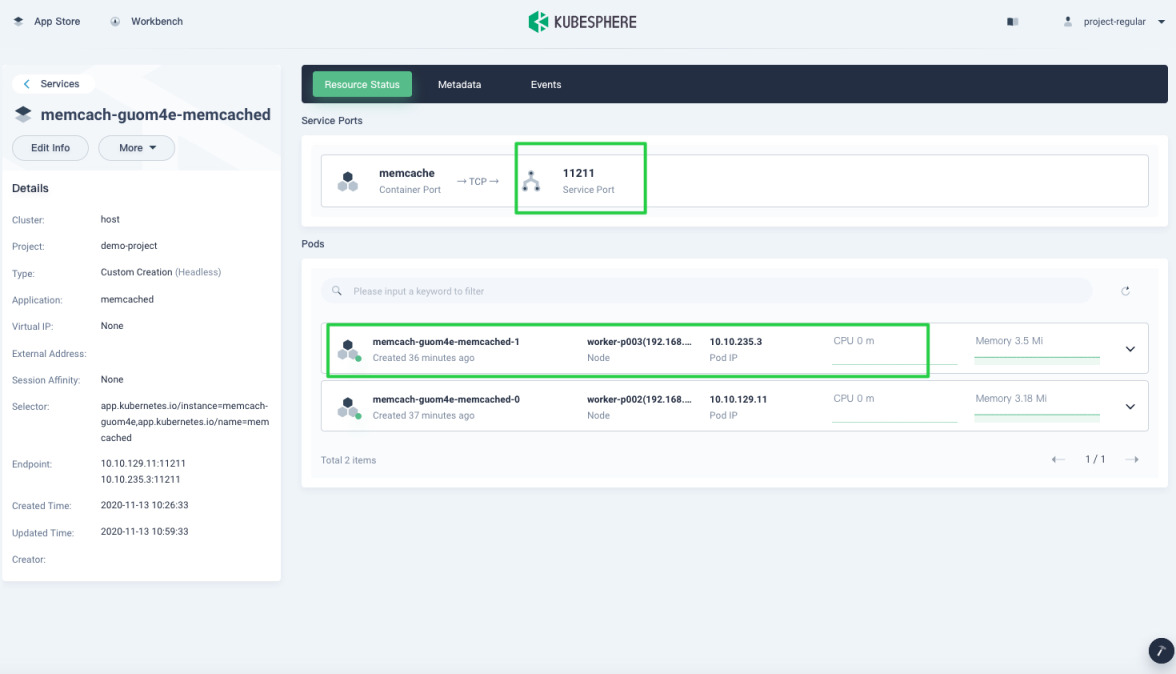
-
As the Memcached service is headless, access it inside the cluster through the Pod IP and port number. The basic syntax of Memcached
telnetcommand istelnet HOST PORT. For example:# telnet 10.10.235.3 11211 Trying 10.10.235.3... Connected to 10.10.235.3. Escape character is '^]'. set runoob 0 900 9 memcached STORED -
For more information, see Memcached.













 Previous
Previous
